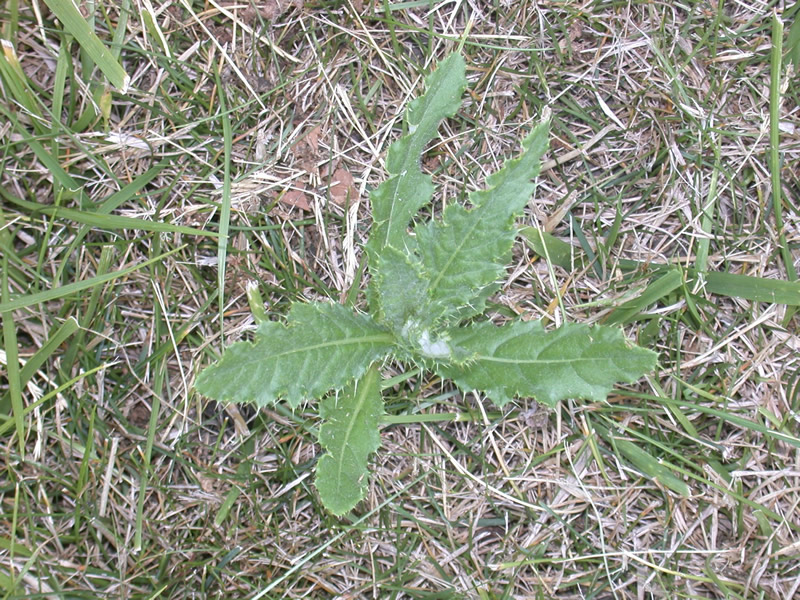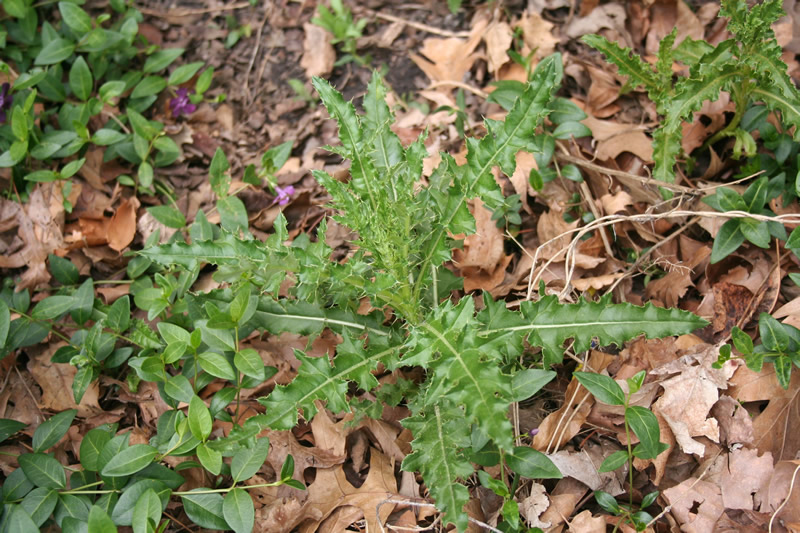Issue 8, July 31, 2019
Canada Thistle Management in Lawns and Landscapes
Canada thistle (Cirsium arvense) is a noxious (and obnoxious) weed that I occasionally get questions about. This plant is listed in the noxious weed laws for most states meaning that its control is required by law. Illinois is no exception. If Canada thistle is growing on land that you own or manage, you are required to control it. Failure to do so may result in your being slapped with an unwanted fine. However, because this law is poorly enforced in many counties, we see more Canada thistle growing happily and spreading wildly than we should. It is commonly found along roadsides and in pastures, lawns, gardens, crops, and meadows.
Many thistles are biennials meaning that they require two years to complete their life cycle and produce seeds. Unlike many other thistles, Canada thistle is a rhizomatous perennial. That means that shoots can arise from their extensive underground system. These shoots are erect and do not form a rosette as seedlings do. Roots and rhizomes commonly extend 3 to 6 feet down in the soil profile (sometimes as deep at 18 feet). Laterally, they can run 20 feet. This makes physically and completely uprooting the plant quite difficult to do. Tillage results in broken root pieces which produce new shoots within about 15 days. This plant is well known for its rapid spread by both rhizomes and seed. One plant is capable of producing 1,500-5,000 long-lived (20 years or more), airborne seed that can travel long distances. Seeds are capable of germinating within 8 to 10 days after the flowers open. If that were not enough, one plant can also produce 6 meters of rhizomes per year. Most of the rhizomes stay within 1 foot of the soil surface. Elizabeth J. Czarapata, author of “Invasive Plants of the Upper Midwest,” ranks this weed as being an invasive plant of “major concern.”
Canada thistle is a cool-season perennial and actively grows in the spring and fall. It produces flowers very early in summer, usually in early to mid-June. Growth slows during hot weather. By early July, seeds are fully developed. This can vary depending on the year’s growing conditions of course. Aboveground portions can be killed by frost. Brown, erect stems may persist into the winter.
Plants can grow 2 to 5 feet tall. The stems are hairy and seedling leaves are covered with short bristly hairs. The leaves of mature plants are simple, alternate, and lobed with spiny margins. The upper leaf surface is dark green and hairless, while the lower surface is light green and may or may not have hairs. Flowers are numerous, small (less than 1”), spineless (unlike most other thistles), and bear pink-to-purple sometimes white flowers. Plants are dioecious and grow in patches of all male or female plants. Cross-pollination is necessary. Only the females produce seed.
The key to controlling Canada thistle is to control it early before it has a chance to produce seeds and a serious network of rhizomes. Mowing or repeated cutting may be used to help prevent the spread by preventing the production of seeds and starving the plant. Mowing too late, however, can spread the seed. Postemergent applications of a systemic herbicide may be used. Fall is typically the best time for these treatments as cool temperatures lead to active growth. Other good times are during the early bolting stage when plants are 6-10” tall and during the bud to flowering stage. In lawns, some herbicide options are 2,4-D, MCPP, MCPA, dicamba, triclopyr, carfentrazone, and quinclorac. Clopyralid is quite effective on thistle but may not be used on residential lawns. Non-selective herbicides such as glyphosate may also be used. Systemic herbicides which move down to the roots and using the full labeled rate will provide the best results. Lawns should be properly maintained to promote a healthy dense turf that will compete well with weeds.
Perhaps, your site is not a lawn but instead a landscape bed. Many of these products are not labeled for this use due to the variety of species present. Be sure that the product you use is labeled for the intended area. Often times, careful spot treatments of non-selective herbicides are your only chemical option. Nearby sensitive plants may be covered with plastic prior to application. The plastic may be removed as soon as sprays dry. Applications may also be painted on using a brush or sponge. Be sure to read and follow all label directions carefully. Realize that multiple applications may be needed to eradicate this weed. Persistence is critical to success.
Pictures:

Canada thistle growing in a lawn.

Canada thistle growing in a landscape bed.

Canada thistle in bloom.
Author:
Michelle Wiesbrook